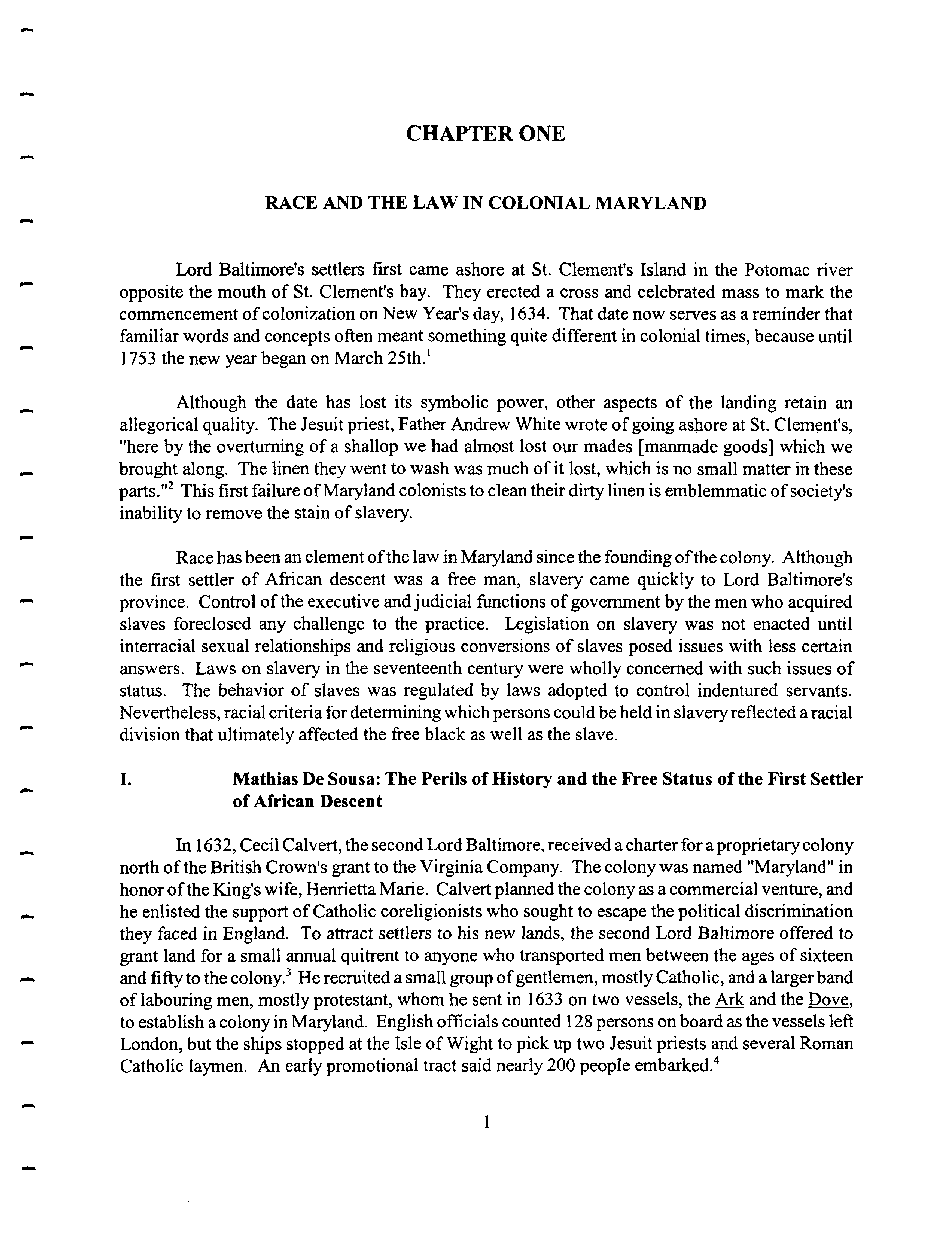|
CHAPTER ONE
RACE AND THE LAW IN COLONIAL MARYLAND
Lord Baltimore's settlers first came ashore at St. Clement's Island in the Potomac river
opposite the mouth of St. Clement's bay. They erected a cross and celebrated mass to mark the
commencement of colonization on New Year's day, 1634. That date now serves as a reminder that
familiar words and concepts often meant something quite different in colonial times, because until
1753 the new year began on March 25th.1
Although the date has lost its symbolic power, other aspects of the landing retain an
allegorical quality. The Jesuit priest, Father Andrew White wrote of going ashore at St. Clement's,
"here by the overturning of a shallop we had almost lost our mades [manmade goods] which we
brought along. The linen they went to wash was much of it lost, which is no small matter in these
parts."2 This first failure of Maryland colonists to clean their dirty linen is emblemmatic of society's
inability to remove the stain of slavery.
Race has been an element of the law in Maryland since the founding of the colony. Although
the first settler of African descent was a free man, slavery came quickly to Lord Baltimore's
province. Control of the executive and judicial functions of government by the men who acquired
slaves foreclosed any challenge to the practice. Legislation on slavery was not enacted until
interracial sexual relationships and religious conversions of slaves posed issues with less certain
answers. Laws on slavery in the seventeenth century were wholly concerned with such issues of
status. The behavior of slaves was regulated by laws adopted to control indentured servants.
Nevertheless, racial criteria for determining which persons could be held in slavery reflected a racial
division that ultimately affected the free black as well as the slave.
I. Mathias De Sousa: The Perils of History and the Free Status of the First Settler
of African Descent
In 1632, Cecil Calvert, the second Lord Baltimore, received a charter for a proprietary colony
north of the British Crown's grant to the Virginia Company. The colony was named "Maryland" in
honor of the King's wife, Henrietta Marie. Calvert planned the colony as a commercial venture, and
he enlisted the support of Catholic coreligionists who sought to escape the political discrimination
they faced in England. To attract settlers to his new lands, the second Lord Baltimore offered to
grant land for a small annual quitrent to anyone who transported men between the ages of sixteen
and fifty to the colony.3 He recruited a small group of gentlemen, mostly Catholic, and a larger band
of labouring men, mostly protestant, whom he sent in 1633 on two vessels, the Ark and the Dove.
to establish a colony in Maryland. English officials counted 128 persons on board as the vessels left
London, but the ships stopped at the Isle of Wight to pick up two Jesuit priests and several Roman
Catholic laymen. An early promotional tract said nearly 200 people embarked.4
1
�
|

